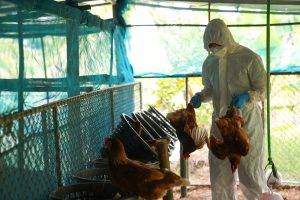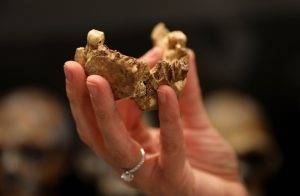Delve into the scientific discourse surrounding the age-old adage that exposure to cold temperatures, sleeping with wet hair, or sitting in an air-conditioned room can lead to illness.
Is there a thread of truth, or is it time to debunk these chilled tales once and for all?
Cold exposure and illness have been intertwined in popular wisdom for generations. Many have believed that braving the cold could make you more susceptible to catching a cold or other illnesses. The customary advice passed down from grandparents, warning against going out with wet hair or staying in an air-conditioned room for too long, continues to influence our behavior. But is there scientific validity to these beliefs, or are they simply frosty myths?
Cold Temperatures and Immune Response
Recent studies have shed light on the intriguing connection. A significant finding from a study published on December 6, 2022, in the Journal of Allergy and Clinical Immunology by researchers from Harvard Medical School and Northeastern University, uncovered a previously unidentified immune response in the nose that combats viruses causing upper respiratory infections.
They found that this protective response becomes inhibited in colder temperatures, making infections more likely. The study highlights a biological root cause for the seasonal variation in upper respiratory viral infections observed each year, including during the COVID-19 pandemic.
This research unveiled that cells in the front of the nose release extracellular vesicles (EVs) into the mucus to surround and attack viruses upon inhalation. These EVs act as decoys, carrying receptors that the virus would bind to instead of nasal cells, thus suppressing the infection. However, when exposed to colder temperatures, the internal temperature of the nose drops, leading to a blunted immune response. The quantity of EVs secreted by the nasal cells decreased by nearly 42%. The antiviral proteins in the EVs were also impaired under cold conditions, making individuals more susceptible to infections like the common cold, flu, and COVID-19.
Further, cold temperatures leading to a decrease in the immune response elicited by cells in the nasal cavity has been observed, explaining increased susceptibility to viruses.
Additionally, cold temperatures lower immunity in the nose, making us more prone to viral infections. A drop in nasal tissue temperature, even by a slight amount, can have implications for our immunity against respiratory viruses. Another aspect is that low humidity during colder seasons protects viruses and may blunt some immune responses, making viral infections more likely.
Unveiling Complex Interactions
The complex interplay between cold exposure and the immune response unveils an intricate balance within the human body. On one end of the spectrum, cold exposure can, in some cases, dampen the immune response, particularly in the respiratory tract, making individuals more susceptible to viral infections. Other studies also corroborate that cold exposure tends to depress immune function and increase susceptibility to infections, particularly in the nasal cavity and respiratory tract.
On the other hand, there is evidence to suggest that cold exposure can activate the immune system under specific circumstances. A study explored the effects of repeated cold water immersions on the immune system of athletic young men.
It found that a single cold water immersion had a minimal effect on the immune system. However, with continued cold water immersions (three times a week for six weeks), there was a small but significant increase in certain immune markers. This includes the proportions of monocytes, lymphocytes with expressed IL2 receptors (CD25), and plasma tumour necrosis factor alpha content. Although the exact biological significance of these changes remains to be explored, the study suggests that non-infectious stressors like cold exposure can activate the immune system to a certain extent.
Cold Exposure’s Varied Effects on Immune Function
Moreover, the thermal regulation of immunity indeed seems to play a pivotal role. Cold exposure has been shown to induce changes in both cellular and humoral aspects of immune function. This includes:
- A reduction in natural killer (NK) cell count and cytolytic activity
- A decrease in lymphocyte proliferation
- After several days of cold exposure, an enhanced production of proinflammatory cytokines.
Additionally, cold exposure has shown to have a regulatory role on inflammation, with a modulatory effect on the expression of immune-related genes in peripheral blood mononuclear cells (PBMC), which play a key role in immune function. The relationship between cold exposure and immune response is somewhat controversial. Some studies revealing minimal or no immunological alterations in humans, while others show immunosuppressive effects.
The nuanced relationship between cold exposure and immune responses can also extend to neuroinflammation. Another study showcased that cold exposure markedly ameliorated active experimental autoimmune encephalomyelitis (EAE), providing an unbiased analysis of immune changes in various compartments during cold exposure, hinting at a protective aspect of cold exposure in certain contexts.
Colder Seasons and Illness Trends
Moreover, scientific evidence has elucidated the first biological mechanism explaining why cases of common cold, flu, and COVID-19 are more likely to spike in colder seasons, shedding light on the heightened susceptibility during this time.
The elderly population seems to bear a heavier brunt. As temperatures dip in winter, the risks for weather-related health problems, including immune system challenges, escalate, especially for older adults.
So, while there might be an element of truth to the age-old warnings about cold exposure, the narrative is far more nuanced than traditionally believed. A balanced view, understanding both the potential risks and benefits of cold exposure, is essential in navigating this chilly discourse.
References
- Huang, D., Taha, M. S., Nocera, A. L., Workman, A. D., Amiji, M. M., & Bleier, B. S. (2023, February 1). Cold exposure impairs extracellular vesicle swarm–mediated nasal antiviral immunity. The Journal of Allergy and Clinical Immunology; Elsevier BV. https://doi.org/10.1016/j.jaci.2022.09.037
- Janský, L., Pospı́šilová, D., Honzová, S., Uličný, B., Šrámek, P., Zeman, V., & Kamínková, J. (1996, March 1). Immune system of cold-exposed and cold-adapted humans. European Journal of Applied Physiology and Occupational Physiology; Springer Science+Business Media. https://doi.org/10.1007/bf00242274
- Reynés, B., Van Schothorst, E. M., Keijer, J., Palou, A., & Oliver, P. (2019, December 27). Effects of cold exposure revealed by global transcriptomic analysis in ferret peripheral blood mononuclear cells. Scientific Reports; Nature Portfolio. https://doi.org/10.1038/s41598-019-56354-6
- Brenner, I. K. M., Castellani, J. W., Gabaree, C. L., Young, A., Zámečník, J., Shephard, R. J., & Shek, P. N. (1999, August 1). Immune changes in humans during cold exposure: effects of prior heating and exercise. Journal of Applied Physiology; American Physiological Society. https://doi.org/10.1152/jappl.1999.87.2.699
- Spiljar, M., Steinbach, K., Rigo, D., Suárez-Zamorano, N., Wagner, I., Hadadi, N., Vincenti, I., Pagé, N., Klimek, B., Rochat, M. A., Kreutzfeldt, M., Chevalier, C., Stojanović, O., Bejuy, O., Colin, D., Mack, M., Cansever, D., Greter, M., Merkler, D., & Trajkovski, M. (2021, November 1). Cold exposure protects from neuroinflammation through immunologic reprogramming. Cell Metabolism; Cell Press. https://doi.org/10.1016/j.cmet.2021.10.002













